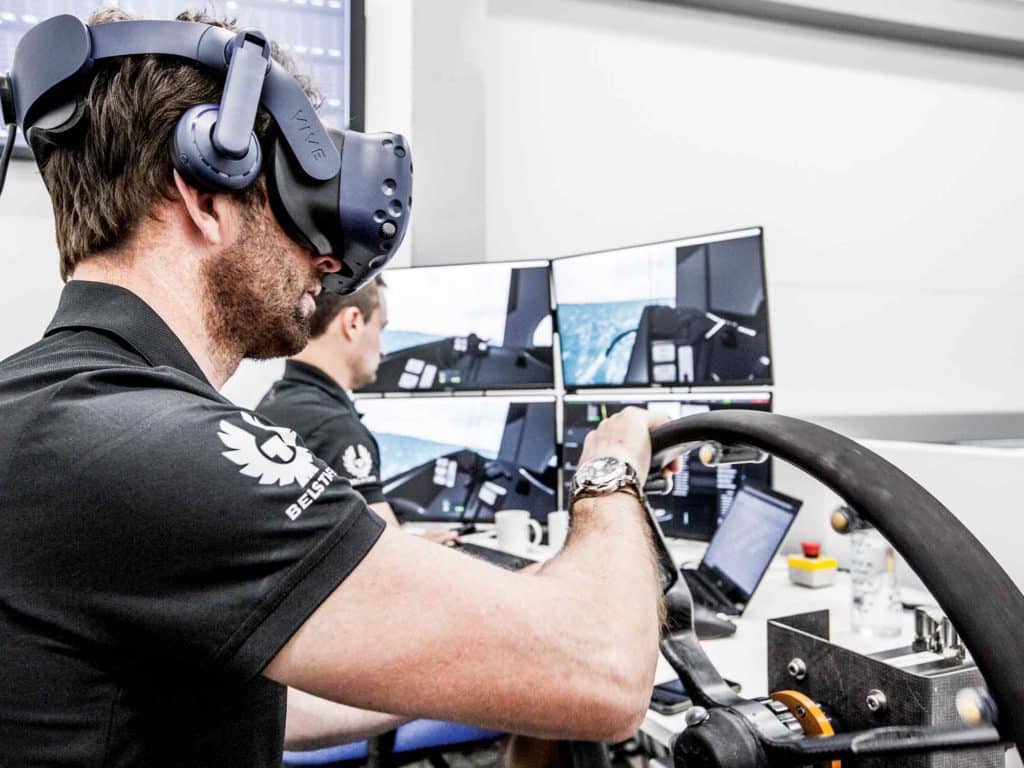
Pop quiz: Which technology did not exist in sailboat racing 10 years ago but will be decisive in the 36th America’s Cup? No, it’s not foiling. Sailboats have been “flying” for more than two decades. It’s the human-in-the-loop simulator. It didn’t exist a decade ago, and now it’s central to the design and development of America’s Cup boats.
Simulation is a technology whose time has come—thanks to the increase in speed and the decrease in price of computing power—but it got a big nudge from the rules of the 36th Cup, which banned all the traditional means of design evaluation and optimization. For the first time, the protocol banned full-scale testing with two boats, but also tow-tank and wind-tunnel testing as well.
The new rules ensured that the technical battlefield for this Cup cycle would be a space that Emirates Team New Zealand already dominated. They were the first Cup team to build a simulator, and their edge in the 35th Cup in Bermuda established that they knew how to use it, and they used it well.
The race to catch up has been ongoing, but the coming of COVID-19, and with it the shutdown or limitation of sailing operations, has leveraged the simulator into a position of even greater importance.
“The simulator part of this has been interesting to watch and evolve,” commented Terry Hutchinson, skipper and executive director of New York YC’s American Magic. “The development that happens there is really ongoing, and that’s as much about researching areas where we can get faster and understanding where we think the others are as well.”
INEOS Team UK also had a simulator for the 35th America’s Cup, and development has continued into this Cup cycle. The “SIM,” as it’s known, consists of a motion platform, virtual reality goggles, human-machine-interface hardware from the boat, and a lot of computer power. It all works in much the same way as modern-day flight or auto simulators.
One thing worth pointing out though, is that the SIM is an aggregation of a lot of other simulations. There is computational fluid-dynamic modeling of the aero and hydrofoils. There is also the more-familiar velocity-prediction program that will calculate the steady-state speed of the boat before dynamic elements are added for a real-time simulation with the crew in charge of the rudder, T-foils and sails.
RELATED: INEOS Team UK Reveal A Unique Take With Its First AC75
It takes a little time to get used to the experience of sailing the simulator. The virtual reality goggles and lack of any apparent wind, spray or noise make for a surreal experience. While there is no mistaking it for the real thing, it’s still an excellent tool to explore the boat’s design, and to optimize sailing techniques.
The AC75 is a completely new class, and two years ago, little to nothing was known about it: hull and foil shapes and configurations, sail trim, foil and rudder settings…never mind how to optimally control all this in changing conditions and through maneuvers. It all had to be explored in the simulator initially, long before there was any opportunity to take ideas to the water.
Once teams launched their first boats, the goal became a virtuous circle where the simulator suggests an improvement that’s then tried on the real boat. If it works, the team makes a direct gain. If it doesn’t, there is still a gain, because the difference between the predicted performance and the actual performance can point out problems in the physics of the simulations. These can then be fixed, leading to more-accurate predictions. In an ideal world, this process of validating the simulator would probably come before the tool was used for development—but this is the America’s Cup, and there is never enough time.
There’s also the application of what each team’s spies report back. With the simulator, “we do get the opportunity to test our foils,” Hutchinson says, “and to test what the other teams have, and run through their strengths and weaknesses.”
A high-quality simulation program can help with the time problem, and though it can’t warp the space-time continuum, it does accelerate the design process. The simulator allows concepts and ideas to be tested faster and more cheaply—and in the end, the speed of innovation is usually the difference between winning and losing.









